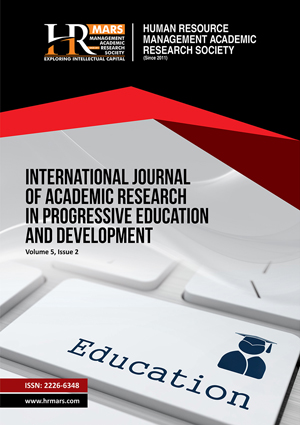
ISSN: 2226-6348
Open access
The paper discusses the categories and methods of multi-shuttle training in badminton elective courses and the role and necessity of multi-shuttle training in backcourt technique through the study of multi-shuttle training in badminton sports training. This study selected 50 students majoring in physical education of Guangxi Science and Technology Normal College to conduct group experiments, and the results show that badminton multi-shuttle training in backcourt technique training not only contributes to stereotypes of movement techniques, additionally, it enhances the quality and stability of badminton strokes., multi-shuttle training also helps to improve students' cardiorespiratory function and physical fitness, and also helps to cultivate students' mental resilience.
Blomqvist, M., Luhtanen, P., & Laakso 1, L. (2001). Comparison of two types of instruction in badminton. European journal of physical education, 6(2), 139-155.
Cooper, D. M., Weiler-Ravell, D., Whipp, B. J., & Wasserman, K. (1984). Growth-related changes in oxygen uptake and heart rate during progressive exercise in children. Pediatric research, 18(9), 845-851.
Fei, A. Z., & Qiang, L. G. (2024). The use of multi-shuttle training method in badminton training. Contemporary Sports Technology, 14(29), 39-42. https://doi.org/10.16655/j.cnki.2095-2813.2024.29.012
Furrer, R., Hawley, J. A., & Handschin, C. (2023). The molecular athlete: exercise physiology from mechanisms to medals. Physiological Reviews.
Gang, Z. (2022). A study on the effect of multi-shuttle training method on the basic badminton backcourt skills of 8-9 year old children [Master's degree,
Heng, L. S. (2007). The role of multi-ball practice method in improving badminton specific skills. Junior sports training(03), 44.
Hui, S. (2015). A study of multi-shuttle training styles and their energy expenditure in college students specializing in badminton [Master's degree,
Jun, G. W. (2017). An experimental study of multi-shuttle training on stroke landing stability of sophomore badminton specialized students [Master's degree,
Li, M. (2025). EMG sensor and infrared thermal radiation image analysis in martial arts training activities: Muscle thermodynamic simulation. Thermal Science and Engineering Progress, 103222.
Li, S., Zhang, Z., Wan, B., Wilde, B., & Shan, G. (2017). The relevance of body positioning and its training effect on badminton smash. Journal of Sports Sciences, 35(4), 310-316.
Manrique, D. C., & Gonzalez-Badillo, J. (2003). Analysis of the characteristics of competitive badminton. British journal of sports medicine, 37(1), 62-66.
Min, L., & Ling, X. Y. (2011). A study of badminton multi-shuttle training on improving the training effect of physical education students. Journal of Jilin Institute of Physical Education, 27(06), 124-125.
Siwei, Y., Xiaohui, B., Meng, G., & Yin, Y. (2023). Evaluation and diagnosis of specialized physical quality of excellent badminton players in China. Thirteenth National Sports Science Congress, Tianjin, China.
Springer, C., Barstow, T. J., Wasserman, K., & Cooper, D. (1991). Oxygen uptake and heart rate responses during hypoxic exercise in children and adults. Medicine & Science in Sports & Exercise, 23(1), 71.
Tang, Y., & Lim, S. P. (2025). Mental training for college athletes: A comparative analysis of Chinese and Western approaches and innovations. Journal of Human Sport and Exercise, 20(1), 266-279.
Wee, E. H., Low, J. Y., Chan, K. Q., & Ler, H. Y. (2017). Effects of High Intensity Intermittent Badminton Multi-Shuttle Feeding Training on Aerobic and Anaerobic Capacity, Leg Strength Qualities and Agility. icSPORTS,
Wei, D. W. (2015). Exploration of multi-shuttle training techniques in badminton training. youth sports(12), 116-117+167.
Wulf, G., & Mornell, A. (2008). Insights about practice from the perspective of motor learning: a review. Music Performance Research, 2, 1-25.
Xiantao, W. (2018). Application of multi-shuttle training method in table tennis combination technique and tactics. Contemporary Sports Technology, 8(34), 28+30. https://doi.org/10.16655/j.cnki.2095-2813.2018.34.028
Xiaotong, L. (2024). Analysis of the application status of domestic badminton multi-ball training method. The 11th National Conference on Physical Training Science in China, 2024., online meeting.
Xingfan, X., & Minglu, X. (2024). Research on the application of serving machine in badminton training. Sporting Goods & Technology(22), 129-131.
Xinxin, W., Bo, L., Xiaotian, L., Lu, J., Le, F., Lei, S., Song, L., Wei, H., Haipeng, L., Xiaoping, C., & Ming, L. C. (2019). Characterization of energy supply in badminton simulated matches and multi-ball practice. China Sports Science and Technology, 55(09), 3-8. https://doi.org/10.16470/j.csst.2019157
Ying, H. (2022). Exploration of multi-shuttle training techniques in badminton training. Sporting Goods & Technology(21), 70-72.
Ying, Z. (2023). A study on the application of multi-shuttle training in high school badminton training [Master's degree,
Zhang, Y., & Chang, Y. (2022). [Retracted] Optimal Modeling and Simulation of the Relationship between Athletes’ High?Intensity Training and Sports Injuries. Scanning, 2022(1), 8447453.
Jianwei, P. W., Meixian, D. (2005). A study of badminton multi-ball training on improving physical fitness ability. China Sports Science and Technology(03), 92-94+102. https://doi.org/10.16470/j.csst.2005.03.028
Yangyang, T., & Pek, L. S. (2025). The Role of Multi-Shuttle Training in Rear-Court Techniques in Badminton: A Study of Chinese University Students. International Journal of Academic Research in Progressive Education and Development, 14(1), 1016–1027.
Copyright: © 2025 The Author(s)
Published by HRMARS (www.hrmars.com)
This article is published under the Creative Commons Attribution (CC BY 4.0) license. Anyone may reproduce, distribute, translate and create derivative works of this article (for both commercial and non-commercial purposes), subject to full attribution to the original publication and authors. The full terms of this license may be seen at: http://creativecommons.org/licences/by/4.0/legalcode